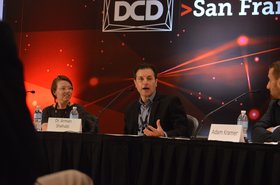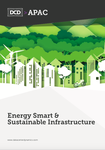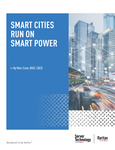Climate change is the biggest global threat that we face. The volume of digital data processed is growing and so too is the need for the physical space to store it all. Lawrence Berkeley National Lab (LBNL) estimate that US data centers consumer 1.8 percent of electricity in that country, and that figure is set to rise. This is despite the existence of an increasing number of carbon neutral data centers available to the select few that can afford to access them.
Typically, businesses with increasing data challenges invest in new hardware, yet the average server utilization at any given data center is shockingly low. The average core monetary cost of this under-utilization is estimated at 36 billion dollars. The environmental cost is arguably greater than that - data center emissions reportedly have the same carbon footprint as the entire airline industry.
Increasing requirements
Within the last decade, the data center industry has exploded. According to IDC, in 2012 there were only 500,000 data centers worldwide. Today, there are 8 million. Increasing technological complexities, the huge proliferation of sensitive data, and an evolving regulatory landscape mean that data management is more difficult than ever.
Worryingly, the volume of data that we use and process will continue to rise. It has been suggested by industry pundit Ian Bitterlin that energy used by Data centers is expected to double every four years. This is not likely to slow down.
Overall, this paints a bleak picture. Is there a viable plan B?
All is not lost
A 2017 report from Greenpeace urged industry collaboration to adopt renewable energy to combat the risk. There are processes or technologies that some data centers are implementing such as using natural forms of air cooling. Adoption of green data center technology has grown in popularity but remains limited in its practicality for most businesses worldwide.
Rather than five to 15 percent utilization, institutions should operate at near 90 to 100 percent server utilization consistently to efficiently manage the growth in data, save millions, and reduce carbon impact. Solutions that focus on this efficiency are sustainable and drive performance.
Predominantly due to innovation, operating sustainably is no longer operating with a higher cost base. Data management platforms can help to optimize processing power: harnessing underutilized computing power available within existing IT infrastructure rather than encouraging the introduction of new hardware to meet the needs of a business.
Green data centers can help to address climate change concerns to a point but the wait for that is too long. We cannot rely on this. Now is the time for institutions to review and better manage their increasing data needs with on-premise, private, or public cloud. Or all of these. Now is the time to use what we already have to do what we need.
Further reading
-

Data center and cloud companies need to be more transparent about energy usage
We can’t fix what we don’t understand
-

Energy Smart Award
Is your facility energy-efficient and innovative? Enter DCD's Energy Smart Award
-

Energy Smart & Sustainable Infrastructure Report
Find out more about the future of energy smart & sustainable infrastructure in Asia Pacific and beyond.


